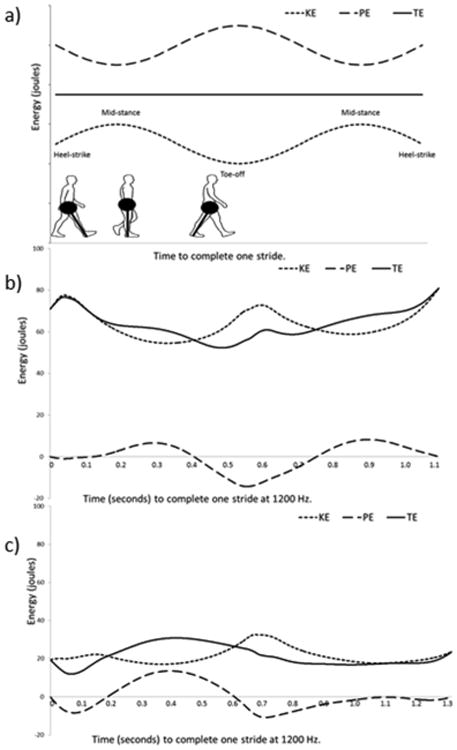Fig 1.

The association of Potential Energy (PE), Kinetic Energy (KE), and Total Energy (TE) of the center of mass in a theoretical model of 100% recovery (a) and two examples from osteoarthritis (OA) subjects from the current study (b and c). In (a) PE and KE are of the same magnitude and 100% out of phase (0% congruity) leading to a pattern of TE that does not fluctuate. Recovery (as calculated following the methods described in the text) would be 100%. The points in the gait cycle are indicated and in the lower left is found a schematic of human walking with a pendular models of the human lower limb (as a massless rod) with the mass of the body concentrated at one end. In (b) PE and KE fluctations are highly out of phase with low congruity (10%) and high recovery (67%). In (c) PE and KE flucations are relatively in phase (congruity of 36%) compared to the subject in (b) and also differ in magnitude, resulting in a low recovery value (38%)
